| Lista Light |  |
A Caruna (Spain) to Oporto (Portugal)
September 28
We say goodbye to Carole, Lucy, the Land Traills and the various animals and board the ferry bound for Santander. Dan joins us with his violin and we finally reach Lista and Clare in A Coruna on September 30.
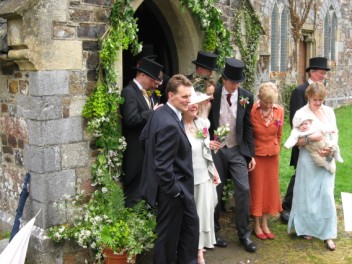
After a couple of days of repair and jobbing, with Clare and Dan madly flying around the city with a trailer behind their bikes on a quest for gas, we leave. We have grown to know La Coruna fairly well, Dave and I have run to the famous lighthouse, Torres de Hercules a couple of times, woven our way through the miniature Stonehenge and passed the sea horn. Clare and Dan have meandered the streets and plazas. Dan is chatting in Spanish and Clare has met Germans, American Spaniards and finally a Danish trio whom she sailed to Portugal with.
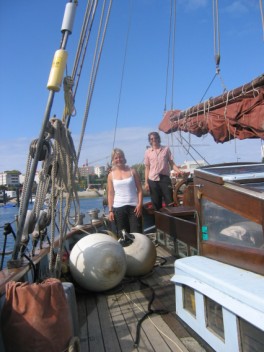
We leave Coruna on Northerly winds, keen to sail passed Cabo Finisterre before the winds move to the south. After more than a month on land my stomach does its familiar lurch as we crash into the waves and I quickly view lunch again, mashed up in a bucket. Dan is hardier than me, but does manage to bring up super, which he describes as not too bad a sensation with soft pasta puke, followed by a rather tasty caramel gold bar mush.
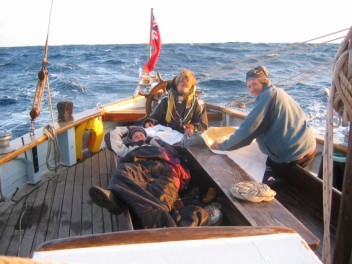
I writhe incompetent in bed. It’s a different world below deck. Luckily, once I am flat on my back nausea generally passes, but the creaks and groans are amplified in surround sound. As we swing from side to side, glasses and bottle smash, food frees itself from lockers and books hurtle to the ground. Canvas and wood shriek in unison and I try and work out where each noise is coming from. The sink gurgles its background symphony and light flickers through the windows. At one point I think I can crawl up on deck and then notice that sea and sky are swishing in a helter-skelter passed the port holes and change my mind. I eat a nectarine but later throw that up, sleep descends.
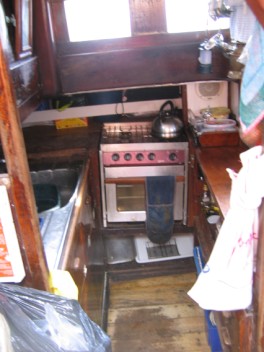
Clare has a stomach of lead. Even on the roughest of seas she has not experienced a pang of sea sickness. Un-phased she plunges into the galley to cook supper while the oven and sink rock by her head. Steadying the pans with her elbow and the chopping board with stomach she concocts omelettes to die for.
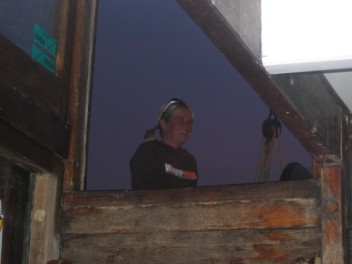
By the morning I feel fine and sit up on deck with Dan. He plays haunting tunes on his violin or plucks melodies on the guitar. I chant Spanish verbs and gaze out to sea. Suddenly a dolphin jumps from the waves. I scream and before we know it, lines of dolphins are surfing through the waves and weaving in our wake. A huge school of what appears to be up to one hundred common dolphins follow us. I watch seven sail on a wave by our side and then dart under Lista. They keep coming and swim with us for some time, before disappearing into the waves. I can’t imagine how you count dolphins? There must be a method, I shall look into it and report back.
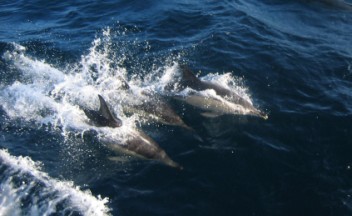
An uncharacteristic dark bird glides above us. On investigation it appears to be a pomarine skua
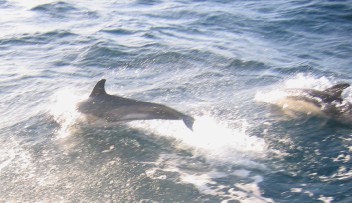
I read, ‘Colour’ by Victoria Finlay. It belongs to a very special friend of mine, who similarly adores and coverts good literature. I was due to return it to her some months ago as I have been reading it probably since May, disgraceful. Things have got between me and the pages, however: a wedding, leaving work, preparing for the trip, a new life, new language and learning how exactly to sail and exist in our new swimming snail shell. But every time I dive back into the pages, I am transported into an exotic journey on the quest for sacred colours that have shaped and dashed empires. It is intriguing in content, fact, history, landscape and place. I am hooked and want to read it all over again already. I will of course now have to contrive a plan to return it to its rightful owner. There are several options; post it, send a replacement copy or lure the said, enigmatic individual to the book.... Meanwhile I shall cherish the pages of the paintbox until its return.
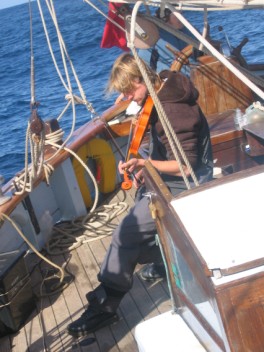
The Islas Ci’es rise up before us. They are grey craggy topped islands swathed in forests with white sandy beaches and a green lagoon. We anchor between Islas del Norte and Islas del Faro. We contemplate paddling to shore, but fatigue takes over and we all slink to bed.
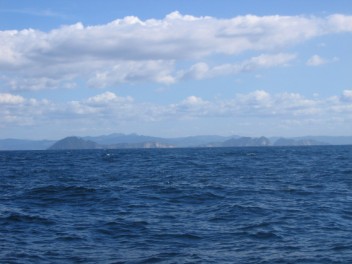
Saturday 4 October
Dan dives into the sea and swims after Clare rowing to the islands. The whole area is a Nature Park, with the three main islands also designated as bird sanctuaries. They are exceptionally unspoilt with only one white concrete bar block on the bay. Ferries glide over from the metropolis of Vego on the mainland to the East and dump day trippers off to walk the islands and sit sipping ‘los cafe’ cortado’ (jet black thimbles of coffee that you could prop your spoon up in).
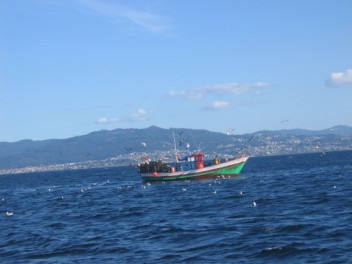
By early evening (6.30ish) it’s getting cold but we’re determined to swim to the island and jump in to the icy water. The water is dark green and cloudy. It feels fantastic to be sluicing (um, crawling) through the water. I love swimming in the open, it makes me want to do triathlons. I think of our mate Leano and his mad swimming dashes in Cornwall at New Year or the multi races he’s been competing in, I could get hooked. I imagine I’m in ‘the Beech’ as we swim to our desert island. Interestingly, this is the one environment that our fearless skipper does not feel so comfortable in. Images of sharks streaking up from the deep or fins swishing passed unsettle the old kipper.
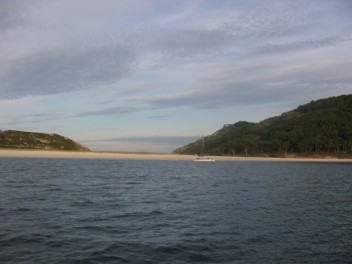
We pull ourselves on to the beach and then run through the golden sand. A thousand gull’s feet splatter the sand, an appropriate image for our mission. Four fluffy waders streak passed. The island is designated for its colonies of lesser black backed gulls, herring gulls and shags. We decide to return early tomorrow and check out the inhabitants properly.
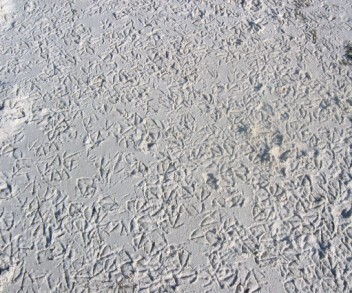
At night Vego glows, a galaxy of yellow twinkling lights above the rias in the distance. I chuck water overboard and weak phosphorescence scatters over the surface of the sea.
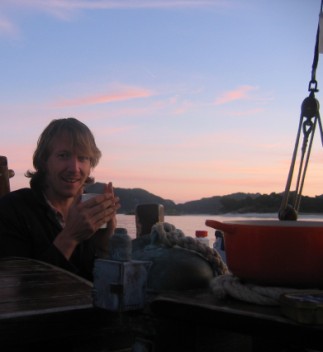
It’s just before 8am, it’s still dark and we’re rowing to the island. A melba sun is rising over the horizon. We set the telescope by the lagoon and watch four common sandpipers it> Actitis hypoleucos
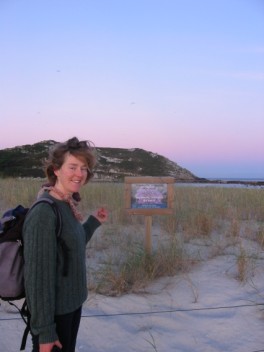
As we walk along the path a pair of blackcaps
A female black redstart flickers close to our feet. This bird is redolent to my work as a consultant ecologist. At least five dawns spring to mind one Summer in London. I was on a mission on a derelict, post industrial site near the banks of a culverted river to seek out this timid bird.
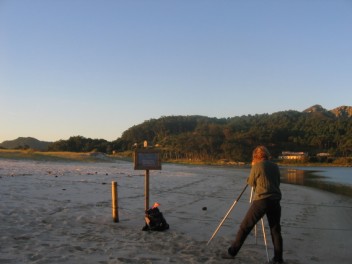
My mission was to establish whether the wee black and red bird (similar in shape and size to a robin) was present on the site as they are a ‘Schedule 1’ protected species in England. I did not find hide nor hair of the bird, but I did find a surprisingly intricate and eclectic ecosystem reminiscent in diversity of a Site of Special Scientific Interest (SSSI). Indeed, charities such as Plantlife and Buglife have been eulogising about the merits of such unruly urban outcasts. The general public are generally, however, uneasy about such informal sites, bound up with their associations of urban decay, rubbish, dereliction and social deprivation. People when surveyed will usually prefer the tidiness of well-kempt lawns and neat flower beds to the sprawl of an ‘urban common’.
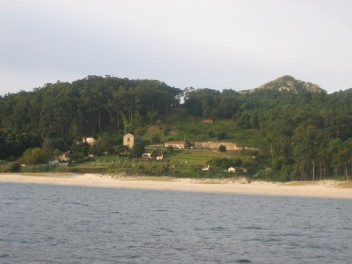
What they are missing, however, is the profusion of evening night shade, Michaelmas daisy, weld and woad and then amidst the exotic the real rarities, the orchids and the gentians. Rare beetles scuttle amongst the rubble, hover flies and bumble bees sip nectar from the buddleia and trap door spiders ensnare victims amongst discarded crisp packets. Under a sheet of corrugated iron a slow worm slumbers, while on top a common lizard darts after a fly. Grass snakes warm in a heap of rubble and compost. A weasel raises his whiskered head like a submarine snorkel above the precipice before finally darting under a bramble bush and off on a hunting escapade.
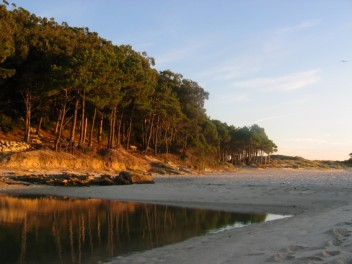
Amongst the rubbish and the poppies children hide and dart in a playground of their own making. This territory is far superior to the restrictions of the adult playgrounds, dreamt up on a drawing board in an office and parked into place, gleaming. Landscape architects such as the late Oliver Gilbert recognised the importance of these spontaneous areas for wildlife and people alike. He noticed associations between assemblages of vegetation and urban areas in the UK based on cultural history. Whether it was the fig trees growing along the River Don in Sheffield in response to the warmer water pumped out of cooling industrial plants or the fields of giant hog weed carried to the port of Hull.
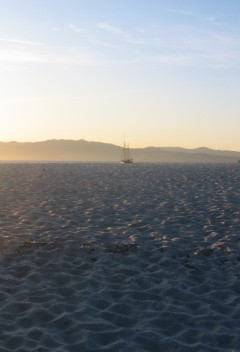
These areas also boost targets, allowing bureaucrats to tick boxes based on the percentage of brown field land converted to housing, which we are told the UK is in desperate shortage of. The general public applaud when another untidy scrubby area is tarmacked, concreted over and smartened up, perhaps their house prises will rise? What they fail to see is that another plot of irreplaceable habitat has been lost in a country that is becoming increasingly bereft and sterile, where even the ‘countryside’ is missing members of the dawn chorus and where we increasingly need to travel to a nature reserve to catch a glimpse of a butterfly or flower that was once common place in the fields of our grandparent’s childhood . This is why charities such as Plant Life and Bug Life scream at politicians when they threaten to smother the Thames floodplain in concrete or want to build another airport for us to speed up our lives even further, as if that makes us any happier?
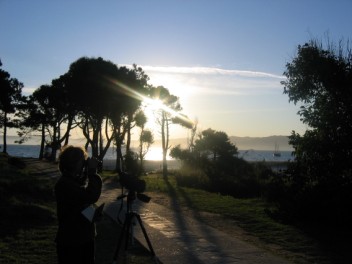
Back to the black redstart! On the scrubby cliffs she is joined by a pair of stonechats. These click and flick their tails and scurry into the air catching insects before alighting back onto their favourite perches. This behaviour makes these birds readily visible and always surprises the viewer in the exotic appearance of the male, with his black head and orange breast when viewed on a bracken frond on a Welsh mountain or Dartmoor tor. A flock of fat wood pigeons perch on the pine trees and then a charm of fifteen ‘finch’ like birds settle on the ground. On closer inspection we find serins! These yellow, streaky, bulbous little finches peck the seeds of canary grasses and other seeds within the turf.
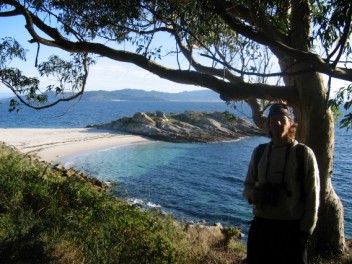
Finally, walking along the beach to the dingy we spot four scurrying waders. After painful deliberation we identify them as three Kentish plovers and one slightly larger juvenile ringed plover. The precision of their features are immaculate through the scope.
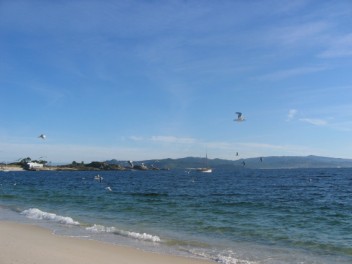
(Log Change - Dave takes the helm . . . . )
As we had anchored in the bay for a couple of days we had seen a smattering of yachts come and more go leaving us alone in the bay, and the end of season close down in the one cafe on the islands. This all had the mark of an end of year migration for which we had missed the starting gun. This part of the trip, and in fact the journey all the way from Isle of Eigg, Scotland, has involved some light pressure to head south as far as the Canaries before inclement weather blows through. Today marked some stiffer wind from the south and we needed to do something about our position in the harbour despite the holding being good. We headed into the wind for a mile or so to find shelter on a lee shore. And then it gusted hard, and our dingy performed a beautiful flip depositing pump, oars and water bottles into the windy channel - AAAARGH, manover drill was immediately actioned. Mass panic followed by an hour of endless circling, Dan thrashing wildly with the sharp end of the boat hook and Clare hanging monkey like to retrieve our lost "men". Had they been real homo sapiens I fear the injuries they would have sustained from their rescue would have far outweighed the effects of a slow and cold submersion death.... Back to the drawing board on MOB.
For me the evening was to mark both the high point and low point of the trip to date. Three days of drilling, wiring and cable laying using a complex array of the "Molly Hogan" hand splices and snap shackles left the Wind Generator installation complete - and the gusts of up to 35mph made perfect conditions to test the beast! The "energy centre" as it has been branded is an important part of the trip and its completion proved by some basic electrical tests was a triumph! We hoisted the critter up high above the forepeak, allowed him to hit the wind, spin furiously and rushed eagerly to check out the ammeters gauging his performance - 2amps, 2.5, 1.5 . . . .3.0 . . .. 3.5!!!! Wooohoooo! Elation followed by booze, lots of booze, some domestic upset over boozing arrangements followed by a wee drink, and then, at 3am, bang. No more whiz, no more amptastic power, just a very loud clatter and the discovery that the "Molly Hogan" splice doesn’t work very well for a straight splice holding the generator aloft. Smashed blades, replacements didn’t fit. No more wind power until spares could be sent from the UK. Dark days indeed.
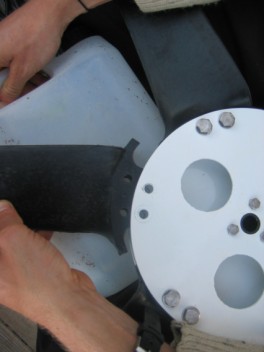
We needed a change of scenery and headed for nearby Vigo (Bigo in Spanish, odd) and made for the marina.
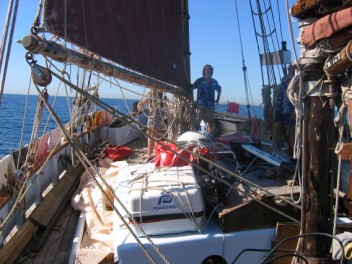
The marina staff saw us coming and anxiously headed us off towards the town quay where ships of our nature may feel more at home, damn it, I was looking forward to another tight pirouette to lance a few plastic boats before settling in to a nice tight spot with the grubbiest fenders we can find (its amazing how brown those tidy white Spanish chinos become as local sports boats see us idling in astern!). Non-the-less, our new home as it become for three days was welcoming, within an inch of Wifi access, abundant with interesting purple starfish and public. Extremely public.
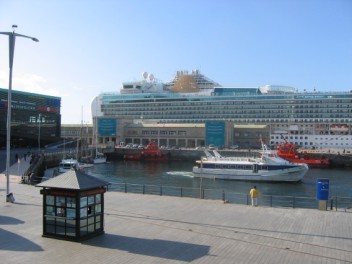
We became the new boy on the bloc, 24 hour surveillance from every passerby, every cruise ship passenger around! Kat and I provided the daytime entertainment with a 3-hour washing extravaganza on deck, and meals and sail folding inspected inscrutably by the older passersby, and with Dan and Clare providing the nocturnal slot with their exhaustive sampling of local ciders, ports, and rums, and the matinee with their tramp like crumpled bodies littering the decks as they have given up sleeping in the cabins for a more al fresco arrangement.
For the obvious pleasure his passengers in particular were drawing from our show I decided that the cruise ship captain of the P&O Cruise "Ventura" should have us aboard. He had been passing us by repeatedly in Galicia and I felt a walk of his bridge - to see Lista Light from his viewpoint, would be fair. I made contact on Ch.16 and was greeted by a very plucky brit, sadly security would prevent us from sharing high tea, but he wished us fair sailing and crackled out. Oh well.
Vigo was a pretty town, gave us the possibility to buy more obscure items like seeds for the "garden" we are planning to grow, some oddities for the boat and our new chart which we will be using for navigation from here on in . . .
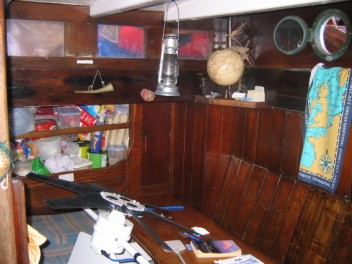
It also afforded Kath and me the chance to eat out - something I have foregone recently in our new budget world! Given I spent the last 3 years working away on business eating out 4 times a week navigating ones own kitchen three times a day was a bit of a novelty, and it was wearing thinner than our compressed foam mattress. Whereas eating out can so often be a letdown if you are at all creative and playful in your own kitchen (god, this sounds like a lesson from some poxy guide book, ug) here it was stunning. We managed to get into a wee restaurant off a side street with what turned out to be a gastronomic menu, mature senioritas serving exquisite local seafood (clams, razorfish, white fish...) and elderly gents exchanging hearty handshakes to each new table which arrived. We looked conspicuously Germanic blondly and toweringly squidged into our little table but it was incredible to watch the show unfold and we could leave stuffed and enlightened.
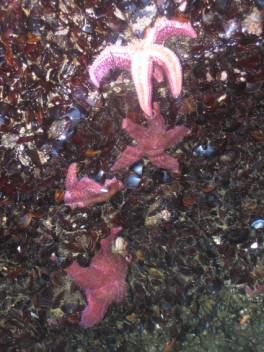
A condition of departure was that the gas must be refilled - Dan and Clare had merrily exhausted options in Coruna cycling for miles smoking cigarettes towing the partially empty gas cylinder in the trailer as locals recoiled in horror, but to no avail (for more see
Greening the Ship
). Somehow though they persuaded a local Vigo garage to top up our cylinders and so our final criteria for leaving was met. At 6am we posted our marina fees through the letter box and thrust Lista into full steam ahead, and then a nasty sound and no movement - flaming stern line had wrapped the prop! 30 minutes of machete to the prop shaft freed us up and confirmed we were much happier at anchor!!!
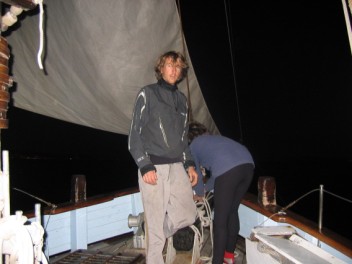
The voyage to Portugal was eventful in the sheer volume of cetaceans – Rissos Dolphin, Common Dolphins, and a possible fin whale sighting! The majesty of these beasts is hard to explain so I won’t. Common Dolphins throughout the night was a great experience as they shook the phosphorescence into streaks of luminescent glow like torpedoes. It was incredible to see the presence of so many dolphins so close to a very busy and cooperative Spanish fishing fleet trawling the ocean by their side. The consequences seem inevitable....
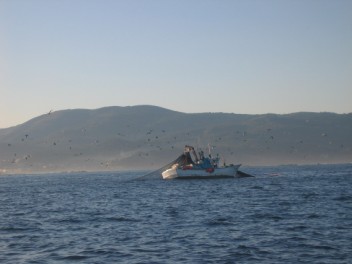
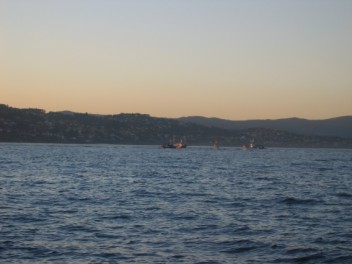
The day gentle and sunny so at last we got up a full wardrobe of sails, main, main topsail, mizzen, mizzen topsail (eventually!), staysail, jib and flying jib topsail. She looked so stunning we had to post Kath out on surfboard to take photos as we eased our way down the Iberian coast making the most of light winds. The tow generator was also doing its bit as we converted all the air we could into lateral power and electrical power.

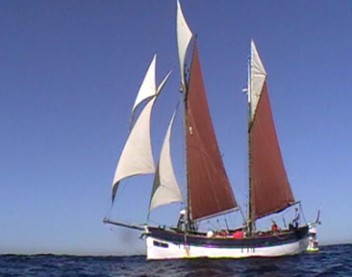
Portugal loomed at sunrise - and so our Spanish siesta draws to a close... And time only for one last photo of some weird people overcome by emotion . . . .
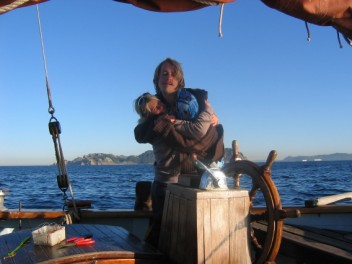
Back to previous section - Bay of Biscay
Forward to next section - Atlantic Portugal
This page hit Count : 9347
This is the Lista Light Website, for the travels of the sailing boat Lista Light
Click here for text-version of site